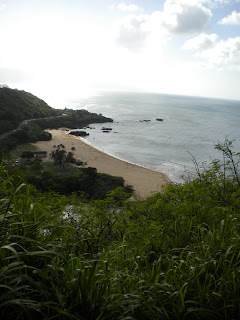
Yesterday the Hawaii Supreme Court heard very important oral argument in the matter of Unite Here! Local 5, et al. v. City and County of Honolulu, et al., 120 Hawaii 457, 209 P.3d 12171 (2009), regarding plaintiff’s efforts to obtain a Supplemental Environmental Impact Statement to evaluate changed circumstances and intensity of environmental impacts. Alongside several other Hawaii environmental groups, the Surfrider Foundation has submitted an amicus brief to the Hawaii state Supreme Court in support of Keep North Shore Country and Sierra Club's case opposing Turtle Bay Resort eight-fold expansion. The obsolete 1985 EIS failed to reassess traffic concerns and endangered species protections for the past 25 years. Surfrider Foundation was fortunate to have Earthjustice Attorney, Isaac Moriwake, representing us in the “friend of the court” capacity to expertly argue the significance of the traffic and species concerns, which should be fully accounted for through Hawaii state environmental laws. Isaac reported that the oral argument went well yesterday and we are hopeful for a friendly verdict.
The Supreme Court reviewed a split 2-1 decision made by the State Intermediate Court of Appeals (ICA), which denied the plaintiff's request for an updated review of the proposed development's environmental and community impacts. The ICA majority held that no supplemental EIS would ever be required unless the "project itself" changed. According to this intermediate court ruling, there is the possibility that no amount of time would be adequate to require a new environmental analysis. Turtle Bay’s 1985 EIS could remain valid for hundreds of years, even if there are major hurricanes, drastic shoreline erosion, or significant changes to the community in the area.
According to the Sierra Club press release, "Much has changed in the last two decades, most notably the rapid growth in traffic congestion along the narrow, two-lane Kamehameha Highway, the only regional roadway on the North Shore," said Gil Riviere, President of Keep the North Shore Country. "The expansion plan is extremely unpopular due to concerns of over-development of the rural area, traffic gridlock, new environmental concerns such as endangered monk seals pupping on the resort property, and the likelihood of disturbing ancient Hawaiian burials."
“The purpose of an EIS is to ensure decision makers have the necessary information about the human and environmental impacts of a proposed project,” said Robert D. Harris, Director of the Sierra Club, Hawai`i Chapter. “This lets the community be involved in the process and ensures smart decisions are made,” he continued. “Plainly, we cannot rely upon obsolete information to approve a project that is clearly no longer appropriate for the community.”
Surfrider members who attended the hearing yesterday reported that the oral argument and subsequent rally went a long way in showing support for defending Oahu's beautiful North Shore coastline and coastal commmunity. For more information, see today’s online article. Additionally, a recording of the oral argument should be posted shortly here. The final decision on the case is likely to come out in 2-6 months. We hope that the Hawaii Supreme Court sees the need for constant environmental review and vigilance, along with the need to clarify the strength of the Hawaii Environmental Policy Act.
